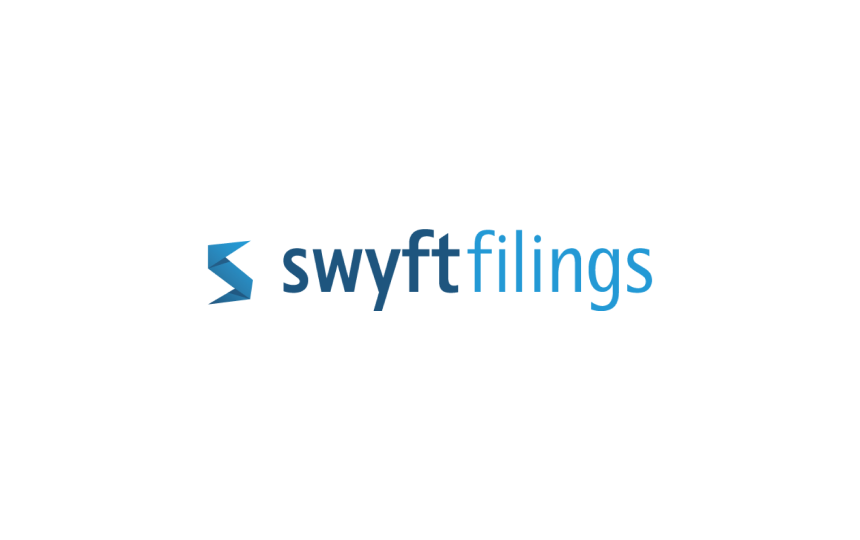
Swyft Filings is committed to providing accurate, reliable information to help you make informed decisions for your business. That's why our content is written and edited by professional editors, writers, and subject matter experts. Learn more about how Swyft Filings works, our editorial team and standards, what our customers think of us, and more on our trust page.
Swyft Filings is committed to providing accurate, reliable information to help you make informed decisions for your business. That's why our content is written and edited by professional editors, writers, and subject matter experts. Learn more about how Swyft Filings works, our editorial team and standards, what our customers think of us, and more on our trust page.

DBA stands for “doing business as.” If you intend to operate your company under a name different from its legal name, you’ll need to file for a DBA.
Obtaining a California DBA or “fictitious business name” involves several steps, and there are a few rules and requirements to be aware of. This guide will cover all you need to know.
DBA in California: Key Takeaways
A California DBA is an alternative name for a business to operate under.
To file for a DBA in California, business owners must file a fictitious business name statement.
The process and fees involved in DBA registration can vary slightly from county to county.
Protect your privacy and gain a new business name with our all-in-one DBA filing service.
What Is a DBA?
Before filing for a DBA, California-based business owners need to have a clear understanding of what it is and what it isn’t. A DBA name is basically a name that business owners can market and show off to the public and their customers, which is different from their company’s registered legal name.
A DBA doesn’t depend on your business structure, nor will it impact the type of business structure you’re operating. It’s simply an alternative name that you can “do business as.” It’s also worth noting that, in California, a DBA may be known as a “fictitious business name (FBN),” “assumed name,” or “trade name.”[1]
Various business types and sizes may want to file for a DBA. For example, if Joe Carter owns a sole proprietorship offering handyman services, its legal name would be his name: Joe Carter. But that doesn’t tell people anything about his business. So, as a sole proprietor, Joe might like to file a DBA for a name like “Joe’s Home Services” to operate under.
LLCs must include the terms “LLC” or “limited liability company” in the name to get registered, and the same goes for corporations. A DBA allows them to get a more catchy name. For example, McDonald’s franchises usually have a separate LLC name but operate under the McDonald’s DBA.

How to File a DBA in California
The DBA filing process involves several steps, including conducting a business name search, filing DBA paperwork at the county clerk’s office, and paying a filing fee for your fictitious business statement. The next steps will show you exactly how to file a DBA California for your business entity.
Step 1 — Do a DBA Name Search
The first step of filing your “doing business as” or California DBA is a business name search. This allows you to ensure that the assumed name you want to use isn’t already taken. Our free business name search tool is a great place to start.
It’s important to note that a DBA name does not come with trademark protection. So, even though business owners are encouraged to use unique names, there is a theoretical possibility of companies in other counties or states using the same or a similar name to you. You can register a trademark to protect your company name and prevent anyone from being able to copy it.[2]
Step 2 — File a Fictitious Business Statement
Once you’ve selected a name for your small business, California law states that you must file a fictitious business name statement.[3] You will file this DBA paperwork at the county clerk’s office.
The exact form and pricing can vary from county to county. You can check with your local county recorder’s office to learn more.
The fictitious business name statement will need to contain your:
Original business name
Business address
Desired DBA name
Names and addresses of all the registered owners
Business type (California LLC, sole proprietorship, corporation)
As part of the DBA filing, the fictitious business name statement must be notarized. A member of the company, the owner, a partner, or an officer can do this.
In addition, there is a time limit in most counties. Typically, all relevant paperwork for a DBA California should be filed within 40 days of the business starting.
Step 3 — File Your DBA With the County Clerk’s Office
With the fictitious business name statement prepared, it’s time to file all the necessary DBA paperwork with your local county clerk’s office. Again, it’s important to remember that this process can vary from county to county. Some counties make it easy to download and fill in the forms from home, while others demand that entrepreneurs visit the county office in person.[4]
You’ll need to make sure that you file with the relevant county office. For instance, if you’re in LA County, for example, file at the LA County office; if you’re in Sacramento County, contact the Sacramento office. Completing DBA filing at the wrong location could delay the process by days or weeks.
You’ll also need to pay the relevant state fees for California DBA registration. Again, this varies. The fee in LA County is just $25 for the first business name and an extra $5 for any additional business name. In other counties, the filing fee may be higher or lower.
Step 4 — Publish Your DBA Name
After filing your fictitious business name statement with the county clerk’s office, registrants should publish it in a local newspaper close to their principal place of business. California’s publication requirements state that the statement should be published for four subsequent weeks.
Publishing your trade name is a critical part of the process. Usually, you must have your statement published within 30 days of filing your assumed name with the county clerk.
Often, counties will keep lists of approved and allowed publications, so it’s best to consult with your county office before publishing your DBA name statement. They’ll also let you know about any relevant affidavit requirements. Typically, you must provide a signed affidavit from your publication within 30 days of the fourth and final week.
Step 5 — Follow Up
There are certain California DBA follow-up procedures to ensure that your chosen name remains active and officially recognized.
A DBA statement will only last for five years or up to the point where the information in the statement changes.[5] Before the end of the five years, you’ll need to refile.
The renewal process can usually be completed online or in person at the county clerk’s office, and a fee will apply. However, you don’t need to worry about republishing in a local newspaper.
Once again, it’s important to note that the precise nature of the process, along with the size of the state fees involved, will vary between counties. Contact your nearest county office to find out more.

California DBA Name Restrictions
There are a few rules and restrictions to remember when filing a California DBA for your new business.
Specifically, the law states that you cannot include certain business-related words like Inc (Incorporated) or Limited Liability Corporation (LLC) in your DBA name. DBAs are not business structures like limited partnerships or nonprofits. So, using those kinds of terms in the DBA is not allowed.
You should also ensure that your chosen DBA California name does not, in any way, mislead people. A company selling flowers, for example, shouldn’t have a DBA that seems to suggest or infer a different kind of product or service.
Finally, remember that filing a California DBA does not give you exclusive rights over your chosen name nor provides protection against other companies using it. The only way to get exclusive rights and protections at the state and federal levels is by registering a trademark.
DBA California Tax Considerations
When setting up a business or making any changes to your company, it’s normal to have concerns about how your taxes or personal assets could be affected. Business owners may, therefore, be worried about potential tax implications for their business entity after choosing a “doing business as” or DBA name.
However, filing a DBA in California simply gives you a different business name to operate under. It does not affect your taxes.
You won’t need to worry about getting a new employer identification number (EIN) or dealing with new tax obligations. The only factor that truly impacts your business’ tax status is the type of business structure you’re operating, like an S corp, LLC, and so on.
Why Should You Get a DBA?
We’ve looked at the process of getting a DBA, but you might still be wondering whether or not you need one and what the benefits could be. There are many advantages to filing for a California DBA, along with various reasons why a business might need or want to do so.
Protect Privacy
One of the main reasons why people opt to use an assumed name or trade name is to protect their privacy. If you have a sole proprietorship or general partnership, for example, you have to use your full personal name as your legal business name. A DBA allows you to operate under a different name.
Access Banking Benefits
A DBA is often required for a sole proprietor to open a business bank account and earn money in their business name. This can also be helpful when it comes to separating personal assets from business assets, as well as protecting your credit rating if the business fails.
Gain Better Branding
DBA names are also very useful for branding and marketing purposes. If you run a sole proprietorship under your own name, for example, prospective customers may not know what you do. DBA names let you market your company and inform your audience about what you have to offer.
Operate Multiple Businesses
DBAs make it easier to operate multiple businesses without needing to create separate entities for each one of them. You can have a single “parent” business and then make individual DBA names for any offshoots or additional companies that you set up later on.
Set Up in Minutes
The step-by-step process of filing a DBA is also straightforward. It��’s much easier and more convenient than forming a corporation, for example. It’s also a very cost-effective option, as the fees for DBAs in California tend to be very affordable.
Gain Privacy: Hide your personal name and details when marketing your business.
Improve Branding: Choose a DBA that easily informs your audience about what you have to offer.
Expand Services: Operate multiple businesses without creating separate entities for each one.
FAQs
What’s the difference between an LLC and a DBA?
An LLC is a type of business entity or structure, standing for limited liability company. A DBA is simply an alternative name for a business to operate under. DBA stands for “doing business as.” Unlike an LLC, a DBA is not a business structure or business type, and it has no impact on how a business operates or what taxes and obligations it has to fulfill.
How much does getting a DBA cost?
In the state of California, the filing fee for a DBA can vary from as low as $10 and up to $100. It all depends on which county you’re located in, as each California county has different rules and pricing systems for DBA filing. To learn more about how much you’ll need to pay, contact your local county office.
Do I need a DBA for my California business?
California law states that DBA filing is required for sole proprietors, partnerships, limited liability companies, and corporations that wish to operate or sign legal forms and documents under a name that is different from their legal name.
What’s the difference between a trade name, assumed name, and a DBA name?
Trade name, assumed name, and DBA name all refer to the same thing: a fictitious, alternative name for your business to operate under which is separate from its legal name.
How long does a DBA last?
In the state of California, a DBA statement will last for five years or until the information in the statement changes, whichever comes first. Once the five-year period is up, you must refile to maintain your DBA name.
Is there a limit to the number of DBA names I can have?
No, there isn’t technically any upper limit regarding the number of DBA names you can have. However, every single name you choose will need to be filed according to the standard process, with a relevant Fictitious Business Name (FBN) statement and publication in a local newspaper for four weeks.
Is a DBA the same as a trademark?
No. A DBA offers no trademark protections. It simply gives you a recognized alternative name that you can use when it comes to marketing your brand, opening a business bank account, doing business, and filling in forms. A trademark is separate and is useful if you want exclusive rights over your chosen name.
Does a DBA affect my business’s tax status?
No, a DBA simply gives you a different name to use. It doesn’t impact your business’ tax status or obligations.
Bibliography
State of California Franchise Tax Board. “Guide to DBAs.” Accessed August 21, 2023.
California Secretary of State. “Trademarks and Service Marks.” Accessed August 21, 2023.
Los Angeles County Registrar-Recorder. “File a Fictitious Business Name Statement.” Accessed August 21, 2023.
Nevada County California. “Filing a Fictitious Business Name Statement.” Accessed August 21, 2023.
Los Angeles County Registrar-Recorder. “Renewals.” Accessed August 21, 2023.
business types
Learn more about each type of business
No matter the business type, Swyft Filings can help you form your new company.

